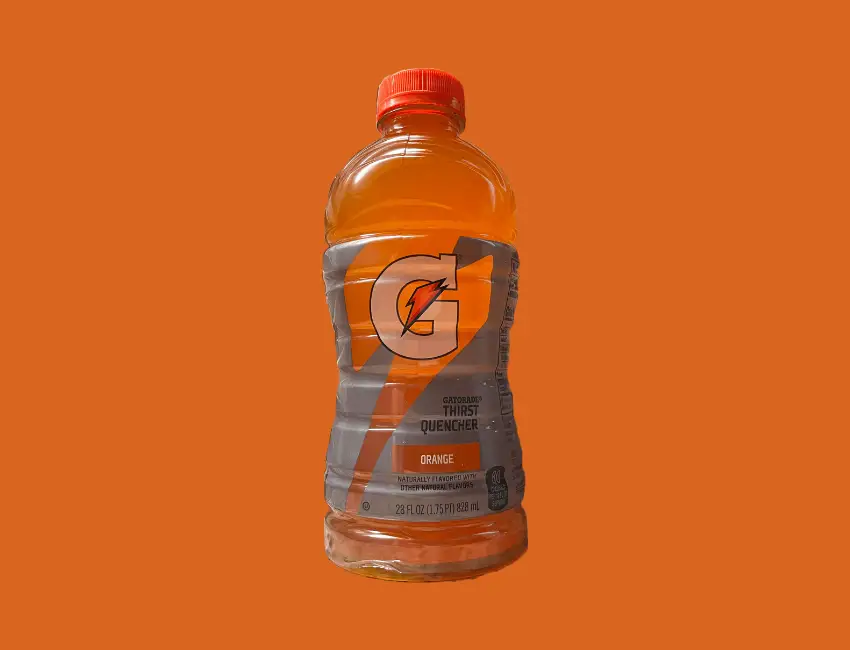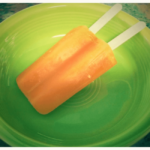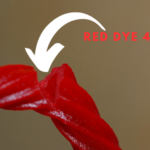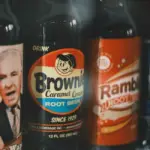When a color additive is used in a packaged food or beverage, the Food and Drug Administration (FDA) requires that it be disclosed in the ingredients.
The ingredients will reflect the name of the FDA-certified color additive such as “Red 40” or “Blue 1” if synthetic. Furthermore, color additives from sources like vegetables and minerals are called exempt color additives. They will also appear in the labeling under such words as “colored with vegetable juice” or “colored added”.
This article specifically discusses whether Orange Gatorade contains any dye. Here is what we found during our research.
Orange Gatorade & Red Dye
Based on a review of its ingredients (see below), Orange Gatorade contains no red dye. However, it does have the FDA-certified color additive, Yellow 6 (Sunset Yellow). This dye is commonly found in candies, beverages, baked goods, and more.
Orange Gatorade Ingredients: Water, Sugar, Dextrose, Citric Acid, Salt, Sodium Citrate, MonoPotassium Phosphate, Gum Arabic, Natural Flavor, Sucrose Acetate Isobutyrate, Glycerol, Ester of Rosin, Yellow 6.
SEE ALSO>>>Does Orange Jell-O Have Red Dye?
Is Yellow 6 Safe?
Yellow 6 is one of the nine certified color additives approved by the FDA. It is permitted to be used in cereals, snack foods, baked goods, gelatins, beverages, dessert powders, crackers, and sauces. FDA regulations outline the maximum amounts allowed to be used in foods and beverages to help ensure safety.
However, color additives may cause an allergic-type reaction, according to the FDA. These reactions are reportedly rare.
Furthermore, Healthline reports that the dye has been linked to hypersensitivity. Health issues such as cramps, hives, skin lesions, and anaphylactic shock have also been linked to yellow 6. Additionally, the dye may cause hyperactivity in a small number of children (source).
Yellow 6 provides no health benefit to the body. You can simply avoid products containing it if consuming the dye is a concern for you. The product label will provide the most accurate and up-to-date ingredient information so be sure to always reference it if you desire to avoid dyes or other potentially unwanted ingredients.
Sources:
Zelman, Kathleen. “Color Additives.” Food & Nutrition Magazine, 29 Aug. 2017, https://foodandnutrition.org/september-october-2017/color-additives/.
Watson, Stephanie. “Understanding Food Dye Allergies.” Healthline, Healthline Media, 25 Oct. 2019, https://www.healthline.com/health/allergies/understanding-food-dye-allergies#:~:text=Also%20called%20Sunset%20Yellow%2C%20Yellow,%2C%20skin%20lesions%2C%20and%20hives.
Kobylewski, Sarah, and Michael F. Jacobson. “Food Dyes: A Rainbow of Risks – Center for Science in the Public Interest.” Center for Science in the Public Interest, https://www.cspinet.org/sites/default/files/attachment/food-dyes-rainbow-of-risks.pdf.







